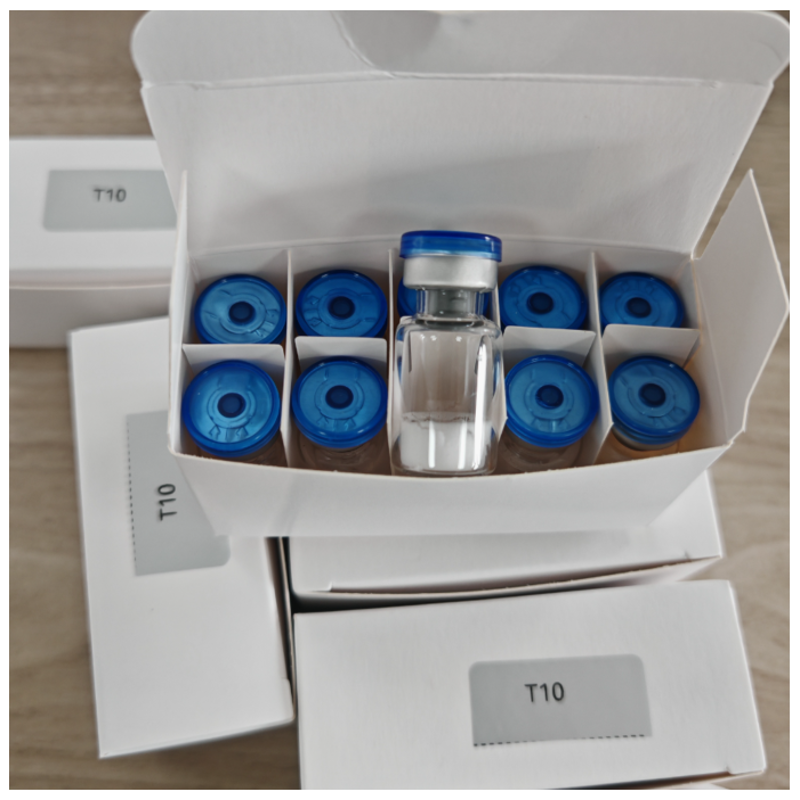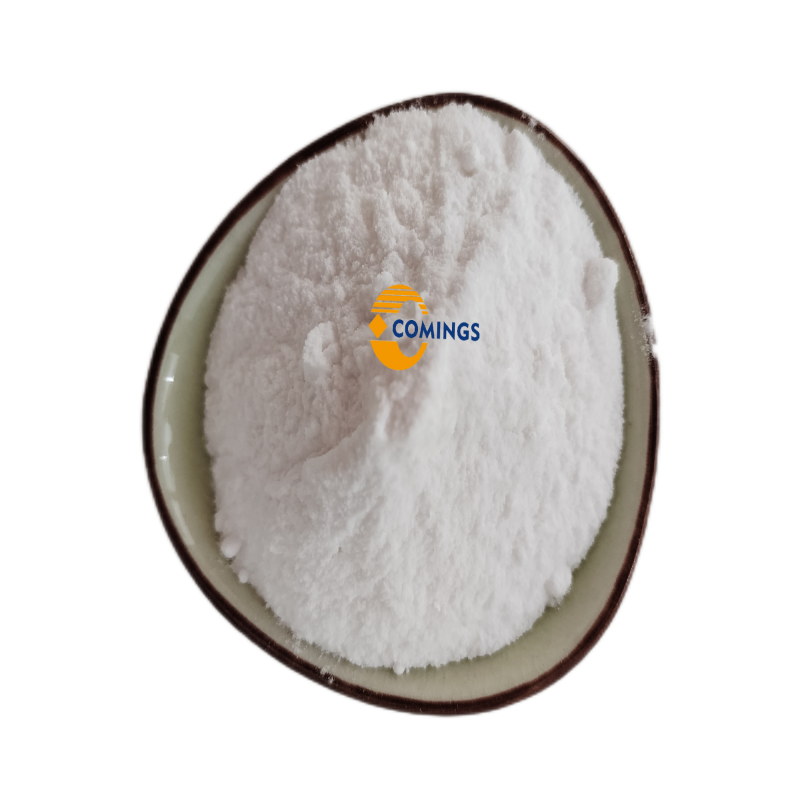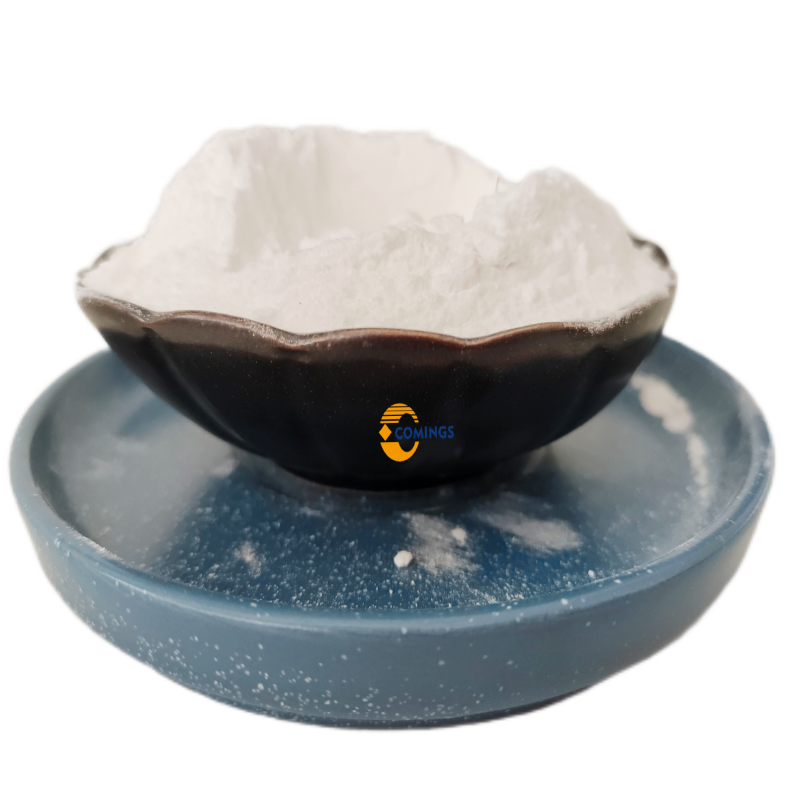-
Categories
-
Pharmaceutical Intermediates
-
Active Pharmaceutical Ingredients
-
Food Additives
- Industrial Coatings
- Agrochemicals
- Dyes and Pigments
- Surfactant
- Flavors and Fragrances
- Chemical Reagents
- Catalyst and Auxiliary
- Natural Products
- Inorganic Chemistry
-
Organic Chemistry
-
Biochemical Engineering
- Analytical Chemistry
-
Cosmetic Ingredient
- Water Treatment Chemical
-
Pharmaceutical Intermediates
Promotion
ECHEMI Mall
Wholesale
Weekly Price
Exhibition
News
-
Trade Service
Type 2 diabetes (T2DM) is often associated with chronic kidney disease (CKD).
Approximately 20%-40% of diabetic patients will develop CKD[1].
Compared with diabetic patients without CKD, patients with diabetes and CKD die The rate is higher, and most deaths are attributed to cardiovascular events [2].
Although current treatment methods can alleviate the occurrence and development of diabetes with CKD, the prognosis of patients is still unsatisfactory.
Therefore, for patients with T2DM and CKD, the emergence of new drugs is urgently needed to improve their health outcomes.
Recently, Bayer announced that its Phase 3 clinical trial FIGARO-DKD study of a new generation of mineralocorticoid receptor antagonist (MRA) fenelidone has reached its primary endpoint.
What is the FIGARO-DKD study, and what kind of changes can the results of the study bring to the treatment of T2DM combined with CKD? Professor Zhu Dalong, Director of the Department of Endocrinology, Nanjing Gulou Hospital, FIGARO-DKD Research China Leading PI Professor Zhu Dalong said: “There are a large number of diabetic patients in China.
Chronic kidney disease is the most common complication of diabetic patients and an independent risk factor for cardiovascular disease.
It
is currently estimated that China suffers from There are 35 million patients with T2DM combined with CKD, and the treatment options for this group are limited.
This is one of the main reasons for our participation in the FIGARO-DKD and FIDELIO-DKD research.
Finellione
as a new generation of non-steroidal selective mineralocorticoids Hormone receptor antagonists, through anti-inflammatory and anti-fibrotic effects, prevent various damages caused by excessive activation of mineralocorticoid receptors.
The results of two phase III clinical studies in which more than 13,000 patients have been enrolled worldwide have been announced to predict fennel Ridone has the potential to become a new treatment strategy that can delay the decline of renal function in such patients, reduce the occurrence of cardiovascular-related deaths and cardiovascular events, and fill the gap in the current treatment strategy for T2DM combined with CKD.
"Phase III FIGARO-DKD study: Finelrone significantly improves cardiovascular outcomes in patients with CKD and T2DM.
The FIGARO-DKD study is a randomized, double-blind, placebo-controlled, parallel group, multi-center, event-driven phase III clinical study , Including about 7400 patients with T2DM and CKD around the world, aiming to evaluate the efficacy and safety of
fennelrone in patients with T2DM and CKD compared with placebo on the basis of standard therapies.
The results of the FIGARO-DKD study show that it is in standard treatment.
On the basis, compared with placebo, finialidone can significantly reduce the risk of cardiovascular death or non-fatal cardiovascular events (myocardial infarction, stroke, or heart failure hospitalization) in patients with T2DM and CKD.
About the FIGARO-DKD study Detailed clinical data will be announced at an upcoming scientific meeting.
It is worth mentioning that the FIGARO-DKD study is the second clinical study to achieve a positive endpoint in patients with T2DM and CKD following the FIDELIO-DKD study.
Item.
The
previous FIDELIO-DKD study has confirmed that compared with the current standard treatment, fennelrone significantly reduces the composite endpoint risk of major cardiovascular events in patients with T2DM and CKD by 14% (HR) at a median follow-up time of 2.
6 years.
=0.
86; 95%CI: 0.
75-0.
99; P=0.
03), and it can also significantly reduce the risk of the composite endpoint of major renal events by 18% (HR=0.
82; 95%CI: 0.
73-0.
93; P=0.
001) [3] .
Figure 1 FIDELIO and FIGARO study include merging FIDELIO-DKD research and results from early to late in CKD patients with T2DM FIGARO-DKD studies have been released, one non Connelly became the world's first proven to bring the heart of T2DM patients with CKD The mineralocorticoid receptor antagonist (MRA) with dual kidney benefits brings a new weapon supported by high-quality evidence-based evidence for the treatment of T2DM combined with CKD, and fills the gap in the current treatment strategy for T2DM combined with CKD.
Mineralocorticoid receptor (MR) is a new target for the treatment of T2DM combined with CKD.
Inflammation and fibrosis are one of the key driving factors for the occurrence and development of T2DM combined with CKD. Inflammation and fibrosis are closely related pathophysiological processes, and fibrosis can also occur independently of inflammation [4].
Chronic inflammation is the basis of DKD's structural and functional changes.
Kidney biopsy shows that a large number of macrophage lineage cells in patients with T2DM combined with CKD have gathered [5].
Albuminuria is an early sign of renal fibrosis in patients with T2DM, and the increase in albuminuria reflects the progression of early structural lesions.
The level of fibrosis biomarker TGFβ in patients with T2DM and CKD was significantly up-regulated, which was related to the severity of albuminuria [6].
However, it is a pity that previous treatments for T2DM combined with CKD have mostly focused on controlling hemodynamics and improving metabolic disorders, and there are few treatments that target inflammation and fibrosis.
The excessive activation of MR leads to inflammation and fibrosis, which may be a potential therapeutic target for T2DM combined with CKD.
Figure 2 The mechanism of action of fennelrone As a new type of non-steroidal highly selective mineralocorticoid receptor antagonist, fennelrone is different from steroidal MRA (ie spironolactone and eplerenone) and has a higher MR The selectivity and stronger affinity of aldosterone can effectively block the excessive activation of MR caused by aldosterone, thereby inhibiting inflammation, fibrosis, and delaying damage to the structure and function of the kidney [7,8].
MR is a key driver of inflammation and fibrosis, which can lead to decreased kidney function.
As a new type of non-steroidal highly selective mineralocorticoid receptor antagonist, fenelidone can effectively block the excessive activation of MR caused by aldosterone, thereby inhibiting inflammation, fibrosis, and delaying damage to the structure and function of the kidney .
For patients with T2DM and CKD, fenelrone can delay renal dysfunction and reduce cardiovascular-related deaths and cardiovascular events.
It is of great significance.
It fills the gap in the current treatment strategy for T2D and CKD, and is the management of T2D and CKD.
A whole new situation has opened, which is worth looking forward to! References: [1] Chinese clinical guidelines for the prevention and treatment of diabetic kidney disease.
Chinese Journal of Diabetes.
2019.
(01): 15-28.
[2] Fox CS, et al.
Lancet.
2012; 380 (9854): 1662-1673.
[3]George L Bakris,et al.
N Engl J Med.
2020 Dec 3;383(23):2219-2229.
[4]Wynn TA,et al.
Nat Med,2012, 18(7): 1028-1040 .
[5]Alicic RZ,et al.
Adv Chronic Kidney Dis,2018, 25(2):181‑191.
[6]Qiao YC,et al.
Medicine (Baltimore), 2017,96(15):e6583.
[ 7]Gerasimos Filippatos,et al.
Eur Heart J.
2016 Jul 14; 37(27): 2105-2114.
[8] George L Bakris,et al.
N Engl J Med.
2020 Dec 3; 383(23): 2219 -2229.
Approximately 20%-40% of diabetic patients will develop CKD[1].
Compared with diabetic patients without CKD, patients with diabetes and CKD die The rate is higher, and most deaths are attributed to cardiovascular events [2].
Although current treatment methods can alleviate the occurrence and development of diabetes with CKD, the prognosis of patients is still unsatisfactory.
Therefore, for patients with T2DM and CKD, the emergence of new drugs is urgently needed to improve their health outcomes.
Recently, Bayer announced that its Phase 3 clinical trial FIGARO-DKD study of a new generation of mineralocorticoid receptor antagonist (MRA) fenelidone has reached its primary endpoint.
What is the FIGARO-DKD study, and what kind of changes can the results of the study bring to the treatment of T2DM combined with CKD? Professor Zhu Dalong, Director of the Department of Endocrinology, Nanjing Gulou Hospital, FIGARO-DKD Research China Leading PI Professor Zhu Dalong said: “There are a large number of diabetic patients in China.
Chronic kidney disease is the most common complication of diabetic patients and an independent risk factor for cardiovascular disease.
It
is currently estimated that China suffers from There are 35 million patients with T2DM combined with CKD, and the treatment options for this group are limited.
This is one of the main reasons for our participation in the FIGARO-DKD and FIDELIO-DKD research.
Finellione
as a new generation of non-steroidal selective mineralocorticoids Hormone receptor antagonists, through anti-inflammatory and anti-fibrotic effects, prevent various damages caused by excessive activation of mineralocorticoid receptors.
The results of two phase III clinical studies in which more than 13,000 patients have been enrolled worldwide have been announced to predict fennel Ridone has the potential to become a new treatment strategy that can delay the decline of renal function in such patients, reduce the occurrence of cardiovascular-related deaths and cardiovascular events, and fill the gap in the current treatment strategy for T2DM combined with CKD.
"Phase III FIGARO-DKD study: Finelrone significantly improves cardiovascular outcomes in patients with CKD and T2DM.
The FIGARO-DKD study is a randomized, double-blind, placebo-controlled, parallel group, multi-center, event-driven phase III clinical study , Including about 7400 patients with T2DM and CKD around the world, aiming to evaluate the efficacy and safety of
fennelrone in patients with T2DM and CKD compared with placebo on the basis of standard therapies.
The results of the FIGARO-DKD study show that it is in standard treatment.
On the basis, compared with placebo, finialidone can significantly reduce the risk of cardiovascular death or non-fatal cardiovascular events (myocardial infarction, stroke, or heart failure hospitalization) in patients with T2DM and CKD.
About the FIGARO-DKD study Detailed clinical data will be announced at an upcoming scientific meeting.
It is worth mentioning that the FIGARO-DKD study is the second clinical study to achieve a positive endpoint in patients with T2DM and CKD following the FIDELIO-DKD study.
Item.
The
previous FIDELIO-DKD study has confirmed that compared with the current standard treatment, fennelrone significantly reduces the composite endpoint risk of major cardiovascular events in patients with T2DM and CKD by 14% (HR) at a median follow-up time of 2.
6 years.
=0.
86; 95%CI: 0.
75-0.
99; P=0.
03), and it can also significantly reduce the risk of the composite endpoint of major renal events by 18% (HR=0.
82; 95%CI: 0.
73-0.
93; P=0.
001) [3] .
Figure 1 FIDELIO and FIGARO study include merging FIDELIO-DKD research and results from early to late in CKD patients with T2DM FIGARO-DKD studies have been released, one non Connelly became the world's first proven to bring the heart of T2DM patients with CKD The mineralocorticoid receptor antagonist (MRA) with dual kidney benefits brings a new weapon supported by high-quality evidence-based evidence for the treatment of T2DM combined with CKD, and fills the gap in the current treatment strategy for T2DM combined with CKD.
Mineralocorticoid receptor (MR) is a new target for the treatment of T2DM combined with CKD.
Inflammation and fibrosis are one of the key driving factors for the occurrence and development of T2DM combined with CKD. Inflammation and fibrosis are closely related pathophysiological processes, and fibrosis can also occur independently of inflammation [4].
Chronic inflammation is the basis of DKD's structural and functional changes.
Kidney biopsy shows that a large number of macrophage lineage cells in patients with T2DM combined with CKD have gathered [5].
Albuminuria is an early sign of renal fibrosis in patients with T2DM, and the increase in albuminuria reflects the progression of early structural lesions.
The level of fibrosis biomarker TGFβ in patients with T2DM and CKD was significantly up-regulated, which was related to the severity of albuminuria [6].
However, it is a pity that previous treatments for T2DM combined with CKD have mostly focused on controlling hemodynamics and improving metabolic disorders, and there are few treatments that target inflammation and fibrosis.
The excessive activation of MR leads to inflammation and fibrosis, which may be a potential therapeutic target for T2DM combined with CKD.
Figure 2 The mechanism of action of fennelrone As a new type of non-steroidal highly selective mineralocorticoid receptor antagonist, fennelrone is different from steroidal MRA (ie spironolactone and eplerenone) and has a higher MR The selectivity and stronger affinity of aldosterone can effectively block the excessive activation of MR caused by aldosterone, thereby inhibiting inflammation, fibrosis, and delaying damage to the structure and function of the kidney [7,8].
MR is a key driver of inflammation and fibrosis, which can lead to decreased kidney function.
As a new type of non-steroidal highly selective mineralocorticoid receptor antagonist, fenelidone can effectively block the excessive activation of MR caused by aldosterone, thereby inhibiting inflammation, fibrosis, and delaying damage to the structure and function of the kidney .
For patients with T2DM and CKD, fenelrone can delay renal dysfunction and reduce cardiovascular-related deaths and cardiovascular events.
It is of great significance.
It fills the gap in the current treatment strategy for T2D and CKD, and is the management of T2D and CKD.
A whole new situation has opened, which is worth looking forward to! References: [1] Chinese clinical guidelines for the prevention and treatment of diabetic kidney disease.
Chinese Journal of Diabetes.
2019.
(01): 15-28.
[2] Fox CS, et al.
Lancet.
2012; 380 (9854): 1662-1673.
[3]George L Bakris,et al.
N Engl J Med.
2020 Dec 3;383(23):2219-2229.
[4]Wynn TA,et al.
Nat Med,2012, 18(7): 1028-1040 .
[5]Alicic RZ,et al.
Adv Chronic Kidney Dis,2018, 25(2):181‑191.
[6]Qiao YC,et al.
Medicine (Baltimore), 2017,96(15):e6583.
[ 7]Gerasimos Filippatos,et al.
Eur Heart J.
2016 Jul 14; 37(27): 2105-2114.
[8] George L Bakris,et al.
N Engl J Med.
2020 Dec 3; 383(23): 2219 -2229.







